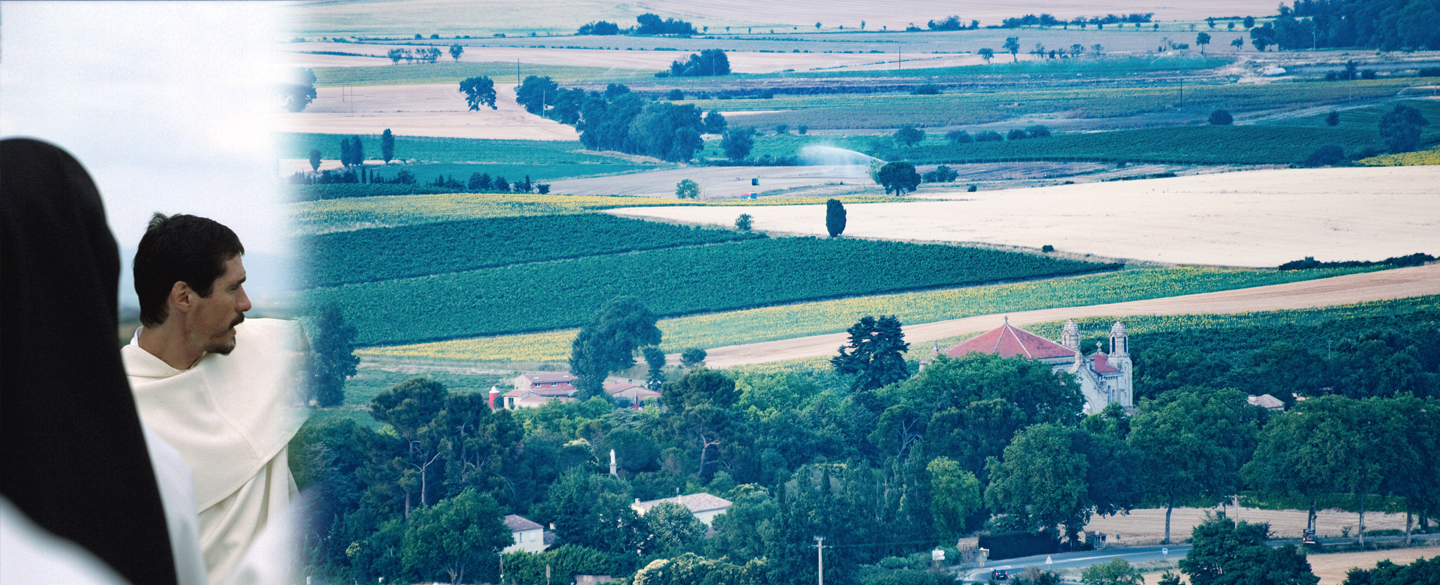
In her imagination Sister Philomena saw the young Convent and Academy another foundation as at Prouilhe. At spiritual reading and other times she read the life of St. Dominic. …It was mutually agreed that St. Dominic’s own motto, prayer, patience, and instruction should be theirs. (Mother Frances Walsh, Annals of St. Cecilia Congregation, 1860-1881)

From the hill of Fanjeaux, St. Dominic could look over a sweeping landscape. He knew it well. He had given himself to the people of this region in “prayer, patience and instruction.” His love for God’s Truth had compelled him, and he had willingly put his hand to the plow. Though his successes had been comparatively few, he had not looked back; he had sown many seeds, and some were bearing fruit.
Looking over the fields on the plain, Dominic yearned for a rich harvest of souls, but the Albigensian heresy was still deep in the soil of southern France. The people were rooted in its precepts: matter was evil. Into this grim environment that denied the Incarnation and abhorred the human body, St. Dominic brought the freedom and joy of the Gospel. In his preaching, prayer and penance, he imitated a God who taught, prayed, and suffered among men.
On the night of July 22, 1206, as he looked down on the land of his labor, Dominic could see the church of Sainte Marie de Prouilhe. Some of the women he had converted had settled there, and had dedicated themselves to caring for the apostolic needs of the Church. But on this July night he saw something new: a globe of fire had descended from the sky, and it rested over the church of Prouilhe. This sign of God, or “Seignadou,” as it came to be called, served as a confirmation of his work. The church of Prouilhe was to become the first foundation of the Dominican Order. Through their penance and prayer, women in the cloister of Prouilhe would join in St. Dominic’s work for the salvation of souls.
What was it about the Seignadou that spoke so clearly of a new foundation? Only St. Dominic knows what divine whisper accompanied this striking sign. Yet for us as Dominicans there is something compelling in the image of bright fire and a man whose life was strongly marked by light.
Before Dominic’s birth, his mother had dreamed of a torch-bearing dog that set the world ablaze. At his baptism, his godmother saw a star gleaming above his forehead. Throughout his life, witnesses remarked of the radiance of Dominic’s face. This radiant light spoke to others of God’s presence among men. And so the Seignadou takes on significance as the moment when Dominic saw light, when Dominic understood that God wished to be present to souls through his “prayer, patience, and instruction.” Dominic was intensely present to others in his preaching and now he would become present through the preaching and prayer of his children in the Order. In a sense, the Seignadou holds within it one of the mottos of the Dominican Order, “to contemplate, and to give to others the fruits of our contemplation.” St. Dominic received the light, lived in the light, and gave the light to the world through his new Order.


 Back
Back